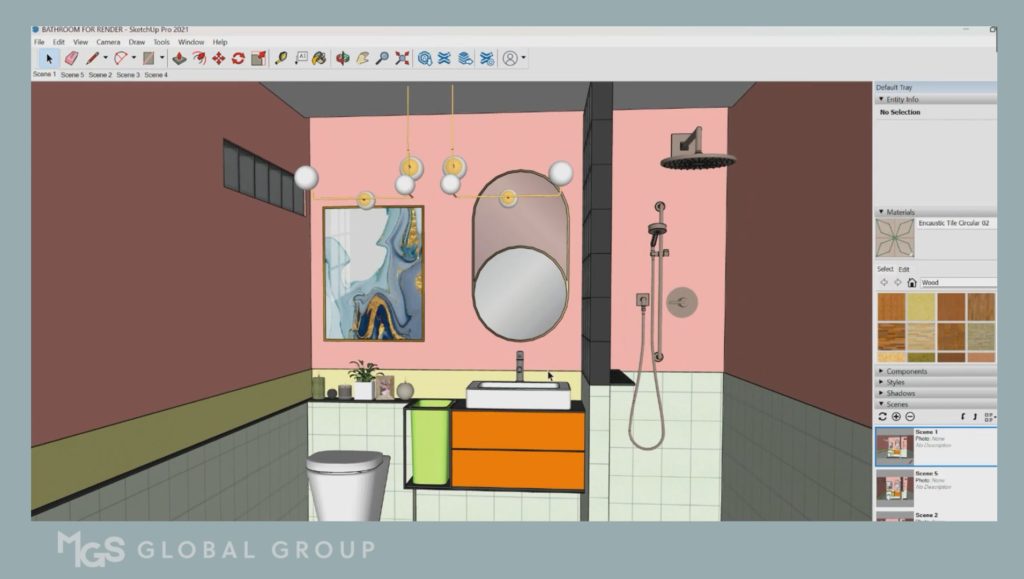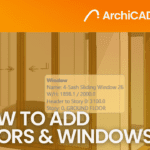SketchUp Rendering Hacks for Improved Visualizations
- 5 min read
- May 15, 2023
SketchUp is a popular 3D modeling software that has been widely used in various industries, including architecture, interior design, and product design. However, creating a 3D model is just the first step in the process. To communicate your design ideas effectively, you need to create high-quality renderings that accurately convey the look and feel of your design.
In this blog, we’ll share some SketchUp rendering hacks and techniques that can help you improve your visualizations and make your designs stand out.
Pay Attention to Lighting
Lighting is one of the most critical factors in creating realistic renderings. To create a realistic lighting setup, you need to understand how light works in the real world. Experiment with different lighting setups, such as natural light, artificial light, and ambient light, to find the best setup for your design. You can also use SketchUp’s built-in lighting tools, such as the sun and sky feature, to create realistic lighting setups.
Adjust Camera Settings
The camera settings you use can have a significant impact on the final rendering. Adjust the camera settings to achieve the desired effect. For example, you can adjust the focal length to create a wide-angle or telephoto effect, adjust the depth of field to create a blurred background effect or adjust the exposure to control the brightness of the rendering.

Add Context
Adding context to your renderings can help give your designs a sense of scale and realism. For example, if you’re designing a building, you can add trees, people, and cars to the rendering to give a sense of how the building fits into the surrounding environment. SketchUp has a built-in 3D Warehouse, where you can find a wide range of 3D models to add to your designs.
Use Post-Processing Techniques
Post-processing is the process of editing a rendering after it has been created. By using post-processing techniques, you can enhance the final rendering and make it look more polished. For example, you can adjust the color balance, contrast, and saturation of the rendering to make it look more vibrant. You can also add special effects, such as lens flares or glow effects, to create a more dramatic look.
The quality of textures and materials used in your SketchUp model can have a significant impact on the overall look and feel of your renderings. By using high-quality textures and materials, you can create more realistic and visually appealing renderings. SketchUp has a built-in library of textures and materials, but you can also find free and paid textures online.
Third-party software like Lumion often comes with its own set of materials that can be used to enhance the look of the rendering. Some people prefer to use these materials to achieve a specific look or style in their visualizations.
Use Plugins and Extensions
SketchUp has a vast community of plugin and extension developers who create tools to enhance the functionality of SketchUp. There are many plugins and extensions available that can help you create better renderings. For example, you can use a plugin to create realistic grass or foliage, or use an extension to add reflections or refractions to your renderings.
At MGS, we rely on Vray 6 as our preferred SketchUp rendering plug-in for creating photorealistic 3D models. Vray 6 is an incredibly powerful extension that allows you to add realistic lighting and materials to your SketchUp designs, bringing your creative ideas to life.
One of the standout features of Vray 6 is its extensive online library of 3D models, materials, and environment sky maps (HRDI). This resource saves a significant amount of time, as you no longer need to manually set up materials for each project.
In addition, Vray 6 offers many useful rendering elements, including Light Mix. Light Mix provides precise control over the intensity and color of every light source in your scene, such as Vray lights, sun, self-emitting objects, and more. This powerful feature allows you to make adjustments without needing to re-render the entire scene, saving you valuable time and effort.
Experiment and Practice
The key to creating great renderings is to experiment and practice. Try different techniques and settings to find what works best for your design. Take the time to learn new skills and techniques, and don’t be afraid to try new things. With practice, you’ll become more comfortable with the software, and your renderings will improve.
In conclusion, SketchUp is a powerful tool for creating 3D models, and with these rendering hacks and techniques, you can create high-quality renderings that accurately convey the look and feel of your designs. Remember to pay attention to the details, experiment with different techniques, and practice to improve your skills. With time and effort, you can create stunning visualizations that showcase your design ideas.
Was this insightful? Give a thumbs up or post a comment.
For more of our blogs, check out https://mgsglobalgroup.com/blog/.
Connect with us!



